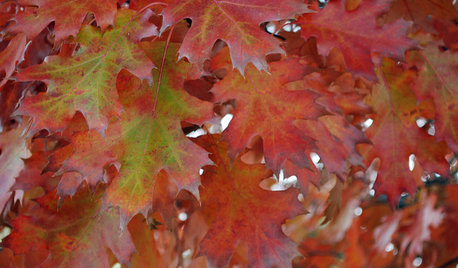Leaf Mold Strategy
PupillaCharites
9 years ago
Related Stories

HOUSEKEEPINGCan-Do Cleaning Strategies for Busy People
While you dream of having a maid (to go with the cook and chauffer), this simplified cleaning routine can keep your real-world home tidy
Full Story
KITCHEN DESIGNFind Your Dining Style: 9 Strategies for Eat-In Kitchens
What kind of seating do you request at a restaurant? It may hold the key to setting up your kitchen table
Full Story
DECLUTTERINGClean Routine: Housework Strategies the Whole Family Can Share
Keep the peace while maintaining a tidy home, with these ideas to get all kinds of cleaning personality types in on the act
Full Story
DECORATING GUIDES13 Strategies for Making a Large Room Feel Comfortable
Bigger spaces come with their own layout and decorating challenges. These ideas can help
Full Story
KITCHEN DESIGN7 Strategies for a Well-Designed Kitchen
Get a kitchen that fits your lifestyle and your design tastes with these guidelines from an architect
Full Story
GARDENING AND LANDSCAPINGSmall Garden Strategy: Built-In Seating
Building a bench or other seating into your landscape can help give a small space a cozy advantage
Full Story

DISASTER PREP & RECOVERYHow to Combat Mold in a Flooded House
Before you rebuild or restore your water-damaged home, take these steps to keep mold at bay
Full Story
HOME OFFICESQuiet, Please! How to Cut Noise Pollution at Home
Leaf blowers, trucks or noisy neighbors driving you berserk? These sound-reduction strategies can help you hush things up
Full Story
GARDENING GUIDES6 Healthy Ways to Handle Fallen Leaves
Once nature's beautiful bounty is spent, these ecofriendly strategies for leaves will put your yard in the clear
Full StoryMore Discussions






seysonn
PupillaCharitesOriginal Author
Related Professionals
Tempe Landscape Contractors · Brookline Landscape Contractors · Hilton Head Island Landscape Contractors · Lady Lake Landscape Contractors · North Plainfield Landscape Contractors · Oviedo Landscape Contractors · Raleigh Landscape Contractors · Snoqualmie Landscape Contractors · Wareham Landscape Contractors · Bremerton General Contractors · Greenville General Contractors · Linton Hall General Contractors · Tyler General Contractors · Miami Decks, Patios & Outdoor Enclosures · Northbrook Decks, Patios & Outdoor Enclosuressheltieche
PupillaCharitesOriginal Author
sheltieche
PupillaCharitesOriginal Author
sheltieche
PupillaCharitesOriginal Author
sheltieche
PupillaCharitesOriginal Author
sheltieche
seysonn
PupillaCharitesOriginal Author
sheltieche
PupillaCharitesOriginal Author